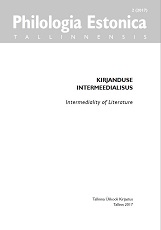Tantsitud „Kalevipoeg” läbi rahvuslike soostereotüüpide prisma
Kalevipoeg danced through the prism of nationalist gender stereotypes
Author(s): Heili EinastoSubject(s): Theatre, Dance, Performing Arts, Gender Studies, Literary Texts, Customs / Folklore, Nationalism Studies
Published by: Tallinna Ülikooli Kirjastus
Keywords: nationalism;gender roles and stereotypes;Estonian ballet;staged folk dance
Summary/Abstract: The idea for the present article emerged from a short, humorous dance sketch for a TV show from 1981 that was based on a scene from the national epic Kalevipoeg, which portrayed the nationalist gender stereotypes in an ironic fashion. The sketch, choreographed by director and former dancer Sulev Nõmmik, was not wholly original, but rather used earlier choreographic versions (1934, 1948) on the same theme as its reference point. Th is article discusses the creation of national dance language and the construction of gender in staged folk dance, as well as the gender stereotypes of the above mentioned choreographed versions of Kalevipoeg: the hero (Kalevipoeg/ Kalev’s Son), the bad guy (Sorts / the Devil), the pure maiden (Saarepiiga/ the Island Maiden), the mother (Linda, Kalevipoeg’s mother) and the evil woman (Sortsipiiga / the She-Devil). The article also discusses a later version of Kalevipoeg by Ülo Vilimaa (1986), which can be described as self-ironical and in which gender roles are portrayed in a slightly mocking manner. The analysis is based on reviews of the period, as well as recordings in the Estonian National Broadcast archives. The lack of sources allows only a brief mention of Exitus by Dmitri Harchenko (1998), which was written in a postmodern and post-dramatic manner with a non-linear narrative and in which gender was presented in a less stereotypical manner than in the earlier versions. This version did not make use of Eugen Kapp’s score, any folk dance materialor the original libretto by Andres Särev.
Journal: Philologia Estonica Tallinnensis
- Issue Year: 2/2017
- Issue No: 1
- Page Range: 85-107
- Page Count: 23
- Language: Estonian

